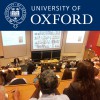Electron Paramagnetic Resonance - Past, Present and Future
Electron paramagnetic resonance (EPR) or electron spin resonance (ESR) spectroscopy as it is also known is a method for studying systems with unpaired electrons. The basic concepts of EPR are analogous to those of nuclear magnetic resonance (NMR), but it is electron spins that are excited instead of the spins of atomic nuclei. EPR was first observed in Kazan State University by Soviet physicist Yevgeny Zavoisky in 1944 and was developed independently at the same time by Brebis Bleaney at the University of Oxford.
In the 75 years that have followed EPR has found many applications in physics, chemistry, biology, medicine, geology and archaeology. In this talk I will endeavour to describe some of the key events in the discovery and development EPR but spend most of the time focusing on applications of the technique and its many derivatives. EPR is very much an evolving technique, with detection of single electron spins now routine in some systems, such that we can optimistically look for applications ranging from studies of single molecules, to enhanced sensitivity and spatial resolution in magnetic resonance imaging.
This annual lecture commemorating Professor Brebis Bleaney (1915-2006) was endowed by Bleaney's pupil Professor Michael Baker (1930-2017).




